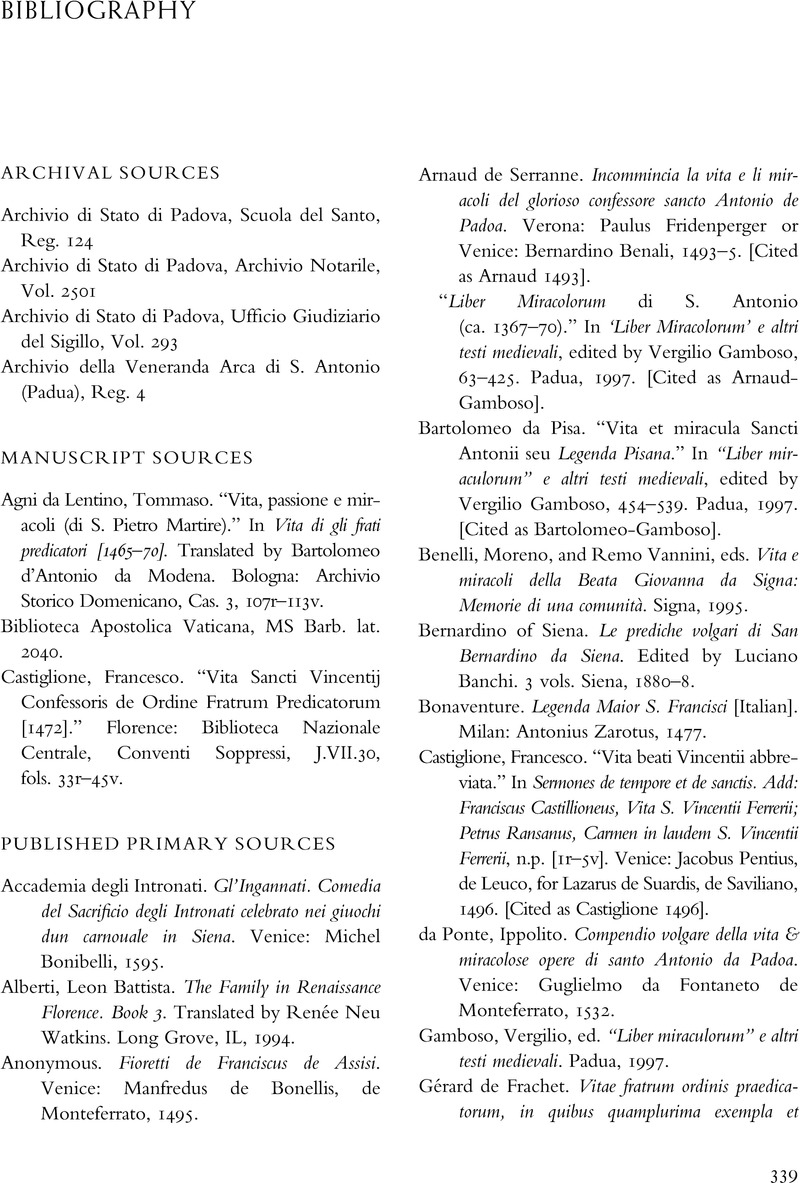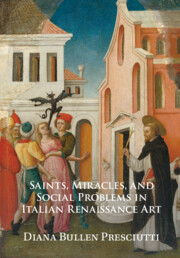Book contents
- Saints, Miracles, and Social Problems in Italian Renaissance Art
- Saints, Miracles, and Social Problems in Italian Renaissance Art
- Copyright page
- Contents
- Figures
- Acknowledgments
- One Introduction
- Two The Vita Icon Reimagined: New (and Old) Saints, New (and Old) Miracles
- Three Storytelling with Saints: Pictorial Narrative and Viewing Experience
- Four Girls in Trouble: Gendering Possession and Exorcism
- Five Assault, Amputation, Absolution: Visualizing the Power of Confession
- Six Thinking with Julian: Marital Violence and Elite Masculinity
- Seven Bernardino the Peacemaker: Visual Hagiography and Factional Violence
- Eight Cannibal Mothers: Picturing Madness and Maternal Infanticide
- Nine Making Innocence Visible (and Audible) in the Basilica del Santo
- Epilogue
- Bibliography
- Index
- References
Bibliography
Published online by Cambridge University Press: 14 April 2023
- Saints, Miracles, and Social Problems in Italian Renaissance Art
- Saints, Miracles, and Social Problems in Italian Renaissance Art
- Copyright page
- Contents
- Figures
- Acknowledgments
- One Introduction
- Two The Vita Icon Reimagined: New (and Old) Saints, New (and Old) Miracles
- Three Storytelling with Saints: Pictorial Narrative and Viewing Experience
- Four Girls in Trouble: Gendering Possession and Exorcism
- Five Assault, Amputation, Absolution: Visualizing the Power of Confession
- Six Thinking with Julian: Marital Violence and Elite Masculinity
- Seven Bernardino the Peacemaker: Visual Hagiography and Factional Violence
- Eight Cannibal Mothers: Picturing Madness and Maternal Infanticide
- Nine Making Innocence Visible (and Audible) in the Basilica del Santo
- Epilogue
- Bibliography
- Index
- References
Summary

- Type
- Chapter
- Information
- Saints, Miracles, and Social Problems in Italian Renaissance Art , pp. 339 - 364Publisher: Cambridge University PressPrint publication year: 2023



